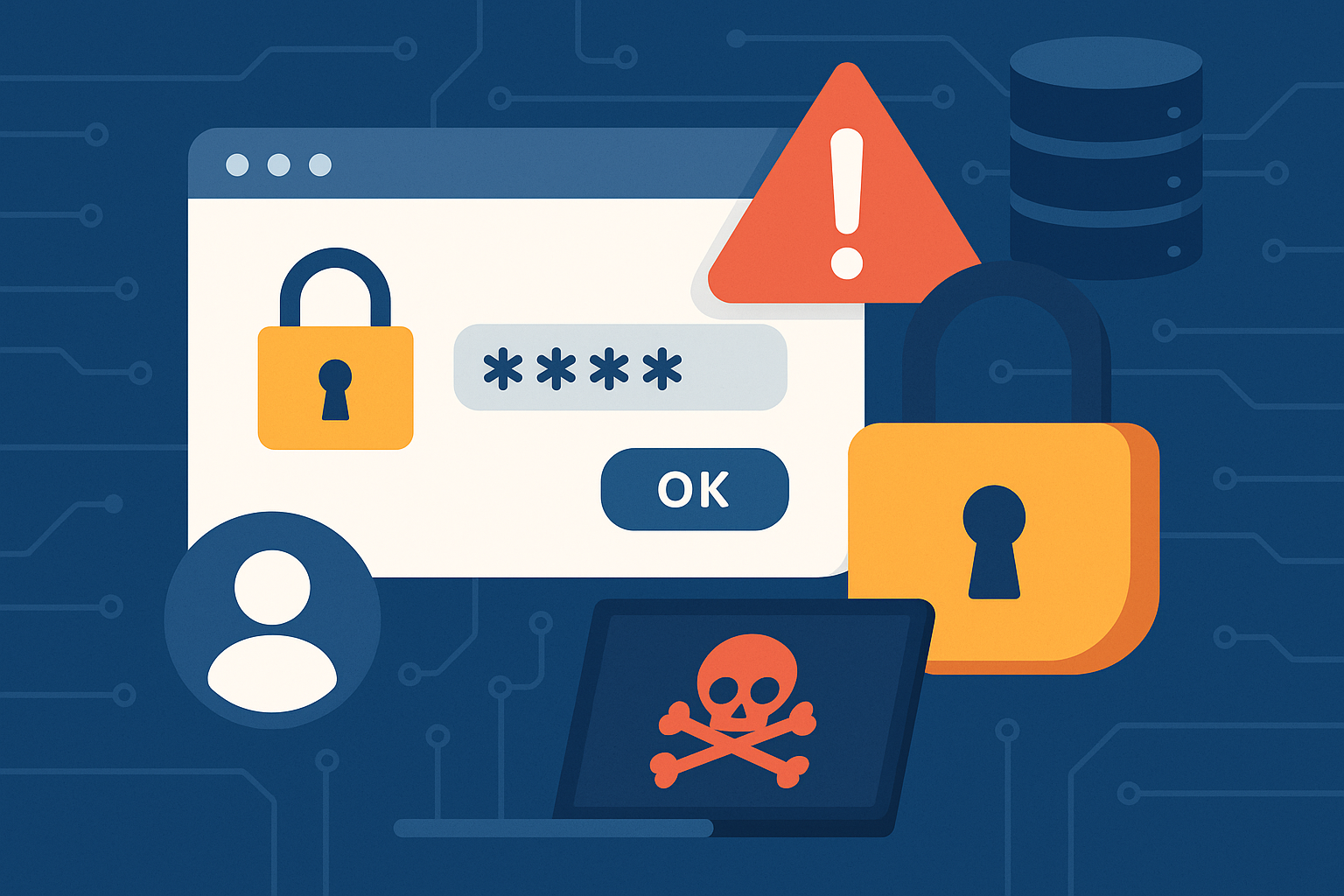Credential Stuffing Attacks Are Rising: Why Passwords Alone Are Failing Businesses in 2025
In recent weeks, multiple security firms have reported a sharp increase in credential stuffing attacks, where hackers use stolen usernames and passwords often from unrelated breaches to access business systems, cloud platforms, and customer portals.
Unlike traditional hacking, credential stuffing doesn’t require sophisticated tools. It only requires patience, automation, and a database of leaked credentials something that is widely available on the dark web. And it works. Especially against small and mid sized businesses that haven’t enabled multi factor authentication (MFA) or deployed 24/7 monitoring.
What Is Credential Stuffing?
Credential stuffing is when attackers take valid login credentials (often leaked from a breach at another company) and try them across multiple accounts or services. These attacks are:
-
Automated: Bots test thousands of username-password combinations quickly
-
Quiet: They often go undetected without behavioral analytics or SOC monitoring
-
Dangerous: One reused password can give attackers access to email, cloud storage, or financial systems
According to the Verizon Data Breach Investigations Report, over 80% of web application breaches are caused by stolen or reused credentials.
Why This Threat Is Growing in 2025
Several trends are making credential-based attacks more dangerous:
-
Remote and hybrid work means more cloud logins and less network perimeter control
-
Widespread SaaS adoption puts more data behind basic login forms
-
AI-assisted brute force tools can bypass basic rate limits or CAPTCHA defenses
-
Shadow IT and personal device use increase the risk of password reuse
Attackers don’t need to “hack” your systems if they can just log in.
Why All Businesses Are Suffering
Credential stuffing is not a threat limited to large enterprises or small startups. Organizations of all sizes and across all industries are being targeted because:
-
Employees continue to reuse passwords across work and personal accounts
-
Legacy systems and cloud platforms often lack enforced MFA policies
-
IT teams may not have visibility into credential reuse or breach exposure
-
Security programs frequently rely on perimeter tools rather than identity-focused defense
No matter the size of your organization, the risk is real. Credential-based attacks are inexpensive, automated, and effective—which makes them one of the most common tools in an attacker’s arsenal.
How to Protect Your Business
1. Enforce Multi-Factor Authentication (MFA) Everywhere
Every login—whether internal or customer-facing—should require MFA. This prevents access even if credentials are compromised.
2. Use a Password Manager
Encourage strong, unique passwords and remove the burden of memorization with tools like 1Password or Bitwarden.
3. Monitor for Unusual Login Activity
Geographic anomalies, repeated login failures, or high-volume attempts should trigger investigation.
4. Conduct a Credential Exposure Scan
Regularly audit employee email addresses for exposure in known data breaches using services like Have I Been Pwned or integrated SOC tooling.
5. Train Employees to Avoid Password Reuse
Human error is still the leading cause of most breaches. Brief, targeted training goes a long way.
Passwords Alone Are Not Enough
If you’re still relying on passwords alone, your business is vulnerable to a type of attack that is growing, automated, and widely successful. Credential stuffing doesn’t just happen to big companies—it affects anyone with exposed credentials and weak access controls.
Now is the time to upgrade your defenses, train your team, and monitor proactively. Identity is the new perimeter, and it’s time to protect it accordingly.

